While MTM accounting is important and widely used, it also has some potential drawbacks. For example, MTM can lead to volatility by forcing companies to report unrealized losses, even if they do not actually intend to sell them. The core idea of MTM is to ask yourself what the asset or liability would be worth if the company were to sell or dispose of it today. Companies need to determine this when they are preparing their financial statements. Mark to market accounting gives shareholders and potential business partners a better understanding of a company’s current balance sheet.
It requires traders to constantly monitor market prices and adjust the value of their securities accordingly. This can be particularly challenging in volatile markets, where prices can change rapidly. Furthermore, the method requires a deep understanding of market dynamics and valuation techniques, which can be daunting for novice traders. However, similar to stock trading, MTM accounting can also lead to significant fluctuations in a trader’s reported income in commodity trading. If the market price of the commodities drops significantly, the trader would have to report a loss, even if they have not sold the commodities.
- For industries with significant market exposure, such as investment banking and insurance, mark-to-market accounting can introduce earnings volatility.
- With a clear understanding of its implications and applications, traders can leverage this method to enhance their trading strategies and achieve their financial goals.
- Similarly, if there is an increase in the value of the futures, there will be a resultant decrease in his account.
What Is the Meaning of Mark to Market in Accounting?
One of the key applications of MTM accounting is in the valuation of futures contracts. These contracts are agreements to buy or sell a specific asset at a future date at a predetermined price. Since the value of these contracts can change significantly over time, MTM accounting is used to adjust their value to reflect the current market price. For example, if a trader purchases a security for $100 and its market price at the end of the trading day is $110, the trader would record a gain of $10. Conversely, if the market price drops to $90, the trader would record a loss of $10. This process is repeated at the end of each trading day, ensuring that the trader’s financial statements always reflect the current market value of ndax review their securities.
The 2008 Financial Crisis
Marking assets to market values offers benefits like real-time insights into financial position, investor transparency, performance measurement, risk management, market discipline, and consistency in valuation. However, MTM also has limitations like subjectivity, volatility, complexity, and tax implications. The amount recognized may be a gain or a loss when compared to the acquisition cost of the security. These are unrealized gains or losses if the assets in question continue to be held, or realized gains or losses if they are sold. Mark to Market accounting is considered necessary in order to provide investors and other market participants with an objective and accurate representation of a company’s assets and liabilities. However, under mark to market accounting, the value of the office building would be $3M.
Investors often act irrationally when they see the value of their portfolio decline. People are more likely to panic sell the assets that are priced every day, than illiquid assets like real estate, art or collectables. The closing price of liquid assets is usually readily available, and often available for free. This Makes it more cost effective than hiring professional third parties to value assets.
Moreover, despite these risks, investing in the stock market can be a lucrative way to grow your wealth. It is an excellent platform to invest in the stock market as it provides you with ready-made stock portfolios created and managed by professionals. The first step in the MTM process is to determine the original purchase price of the financial instrument.
Steps Involved in the MTM Process
Even though the value of securities (stocks or other financial instruments such as options) fluctuates in the market, the value of accounts is not computed in real time. Problems can occur when the market-based measurement does not accurately represent the underlying asset’s true value. This can occur when a company is forced to calculate the selling price of these assets or liabilities during unfavorable or volatile times, such as a financial crisis. For example, if the liquidity is low or investors are fearful, the current selling price of a bank’s assets could be much less than the value under normal liquidity conditions. This case occurred during the 2008 financial crisis, where many securities held on banks’ balance sheets could not be valued efficiently as the markets had disappeared bdswiss forex broker review from them. Finally, MTM accounting can also enhance transparency in financial reporting.
Profits and losses don’t need to be settled each day like they do with margin instruments, but portfolios and positions do need to be valued each day for reporting purposes. Traditionally, assets were valued at their original cost, less depreciation. But this method doesn’t always give a true reflection of the real value of an asset, particularly when it’s an instrument that will need to be sold at some point. In this case, it’s more appropriate to value the asset at a price at which it can actually be sold.
What are Mark to Market Losses and Gains?
If the market value of the assets increases, the company will report a gain. On the other hand, if the value of assets decreases, the company xtb review will report a loss. Mark to market is an accounting method that values financial instruments such as stocks, bonds, and derivatives. It strives to offer a realistic assessment of a company’s or institution’s financial position based on the market’s condition.
- For a home mortgage, an accountant would look at the borrower’s credit score.
- For assets to be valued at the last price at which they were traded, there needs to be agreement on what the last price was.
- Mark to Market margin or MTM margin is the collateral required by a broker or an exchange to ensure that traders can cover their potential losses.
- Six months later when Jim sells the shares, they are trading at $500, so that means he has lost $10,000.
- Companies adopt alternatives where marking to market is difficult or yields counterintuitive results.
- By providing a real-time valuation of securities, it allows traders to identify potentially profitable trading opportunities.
One such method is ‘Mark to Market’ accounting, a strategy that can significantly impact the financial standing of a company or an individual trader. This article delves into the intricacies of this method, providing a comprehensive understanding of its implications and applications in the trading world. IASB is a global organization that sets accounting standards for companies outside the United States. IASB has issued several accounting standards related to MTM, including IAS 39, which guides accounting for financial instruments. Mark to Market margin or MTM margin is the collateral required by a broker or an exchange to ensure that traders can cover their potential losses. As the market price remains above the purchase price and the stop loss is not triggered, the trader’s position value and unrealized gain continue to remain positive.
It is commonly applied to liquid securities with readily available market prices like stocks and bonds. But other assets like fixed assets, intangibles, or advances may be excluded from MTM requirements, as estimating fair value can be difficult or yield counterintuitive results in such cases. Mark-to-market accounting is subject to regulatory oversight to ensure consistency and prevent manipulation. In the United States, the Securities and Exchange Commission (SEC) enforces compliance for publicly traded companies, requiring adherence to GAAP principles under Regulation S-X.
For example, let’s say a company decides to invest its cash in long-term Treasury bonds. If interest rates rise following that investment decision, the value of those bonds will decline. If those assets are marked to market each quarter, the company will show a value that’s less than what it originally invested.
MTM accounting can impact the income statement by changing the value of a company’s assets or liabilities. MTM settlement is important because it ensures that both parties in a contract are able to account for changes in market value and are not subject to excessive risk. It also ensures that the contract accurately reflects the price of the underlying asset. For example, if a trader buys a futures contract for a specific price and the market price of that contract drops.
IFRS is a set of international accounting standards used by companies in over 140 countries. IFRS also requires companies to use MTM accounting for financial instruments such as futures and marking to market in derivatives contracts. If a stock portfolio is used as collateral for a loan, the lender will also want to see regular MTM portfolio values. Margined stock trading accounts effectively provide investors with leverage by lending cash to the investors and using the value of the portfolio as collateral. The MTM process for a margin stock trading account is similar to the way futures positions are marked to market.
Changes in the fair value of assets and liabilities can influence the operating activities section, particularly through adjustments for non-cash items. For instance, a significant unrealized loss on an investment would be added back to net income in the cash flow statement, affecting the overall cash flow from operating activities. This interplay between fair value adjustments and cash flow can offer insights into the liquidity and operational efficiency of an entity. One of the fundamental principles of mark to market accounting is the use of observable market data to determine fair value. This includes quoted prices in active markets for identical assets or liabilities, which are considered the most reliable indicators of fair value.
Get Started with a Stock Broker
As the historical cost principle of accounting values assets based on the original price it was purchased, using mark to market provides a more accurate picture of what a company’s assets are worth today. MTM is an accounting method used to determine the value of an asset or security based on its current market price. The mark-to-market process is important in financial instruments as it helps investors value assets accurately and manage risk. Marking to market aims to provide reliable information on the current fair values of assets and liabilities.
It is necessary to understand them so that they can be appropriately used where they are suitable for. The Investments will be shown in the new amount of $ 8,000 ($ 10,000 – $ 2,000) on the balance sheet, and the loss will be recorded in other comprehensive income. The ultimate purpose is to ensure that the exchange, which bears the risk of guaranteeing the trades, is firmly protected. As a result, many businesses can go bankrupt, setting off a downward spiral that makes a recession worse. But there is not a liquid market for this bond like there is for Treasury notes.

